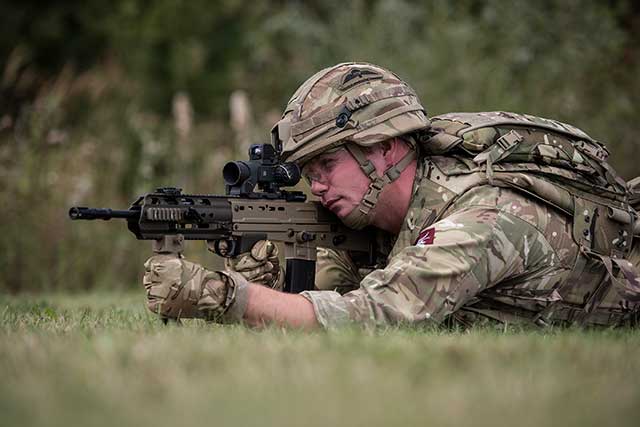In a chilling address at Chatham House in London, NATO Secretary General Mark Rutte issued a dire warning to the Western world, urging the United States and its allies to dramatically ramp up defense spending to confront a rapidly deteriorating global security landscape.

Speaking just weeks before a pivotal NATO summit in The Hague, Rutte painted a grim picture of a future where Russia could be poised to challenge the alliance militarily within five years, a threat he underscored with a provocative quip aimed at Britain: failure to bolster defense budgets could mean learning to “speak Russian.”
The speech, delivered to a packed audience of policymakers, analysts, and journalists, outlined a vision for a “stronger, fairer, and more lethal” NATO, with a proposed defense spending target of 5% of GDP for member nations, a significant leap from the current 2% benchmark.
Rutte’s remarks come at a time when the transatlantic alliance faces unprecedented challenges, from Russia’s ongoing war in Ukraine to rising tensions with China, Iran, and North Korea. His call for a 400% increase in air and missile defense capabilities, coupled with a push for enhanced military production, signals a shift toward preparing NATO for a potential large-scale conflict.
The secretary general’s blunt rhetoric, particularly his comment about the consequences of underfunding defense, struck a nerve, resonating with fears about the West’s readiness to deter aggression. While Rutte emphasized that NATO remains a defensive alliance, he stressed that the stakes have never been higher, with hostile actions like cyberattacks, sabotage, and assassination attempts already targeting member states.
The urgency of Rutte’s message was amplified by his reference to Russia’s military buildup. He noted that Russia’s defense spending is projected to reach 7-8% of its GDP in 2025, a level not seen since the Cold War, with its defense industry churning out tanks, armored vehicles, and ammunition at a staggering pace, supported by Chinese technology, Iranian drones, and North Korean troops.
This escalation, Rutte argued, demands a robust response from NATO, particularly from the United States, which currently accounts for over 60% of the alliance’s defense expenditures. “We are not ready for what is coming our way in four to five years,” Rutte warned in a speech earlier this year, a sentiment he reiterated in London to drive home the need for immediate action.
Rutte’s proposal for a 5% GDP defense spending target includes 3.5% for core military needs, such as weapons, personnel, and training, and an additional 1.5% for security-related investments like military mobility and infrastructure resilience.
This ambitious plan, which he expects allies to formalize at the upcoming summit on June 24-25, has sparked debate across the alliance. In the United States, where defense spending is estimated at 3.19% of GDP in 2024, down from 3.68% a decade ago, the proposal aligns with President Donald Trump’s long-standing demand for allies to contribute more to collective security.
Rutte acknowledged this pressure, noting that Trump’s insistence on equitable burden-sharing is valid and that European nations and Canada must step up to the challenge.
The focus on air and missile defense is a cornerstone of Rutte’s vision, reflecting the evolving nature of modern warfare. He called for a 400% increase in these capabilities, citing the need to counter advanced missile systems deployed by adversaries. For context, NATO’s current air defense systems include the U.S.-designed Patriot system, a sophisticated platform capable of intercepting ballistic missiles, cruise missiles, and aircraft.
The Patriot, with its AN/MPQ-53 radar and PAC-3 missiles, can engage targets at ranges up to 160 kilometers and altitudes of 24 kilometers, offering robust protection against threats like Russia’s Iskander ballistic missiles, which have a range of 500 kilometers and can carry conventional or nuclear warheads.
In comparison, Russia’s S-400 system, a key component of its air defense network, boasts a longer range of up to 400 kilometers and can engage targets at higher altitudes, posing a significant challenge to NATO’s current capabilities.
Rutte’s push for enhanced air defenses also includes investments in next-generation systems, such as the U.S. Army’s Integrated Air and Missile Defense Battle Command System [IBCS], which integrates multiple sensors and interceptors for improved coordination.
Beyond air defenses, Rutte emphasized the need for NATO to boost its defense industrial base to keep pace with adversaries. He highlighted the alliance’s lag in producing critical equipment, from fighter jets to tanks, compared to Russia and China. For example, Russia’s T-90M tank, an upgraded version of its Soviet-era T-72, features advanced reactive armor and a 125mm smoothbore gun, with production rates reportedly reaching hundreds per year.
In contrast, the U.S. M1 Abrams, equipped with a 120mm gun and advanced electronics, is produced at a slower pace due to budget constraints and supply chain issues. Similarly, China’s Type 99 tank, with its laser defense systems and high mobility, underscores the need for NATO to modernize its ground forces.
Rutte’s call for increased production aligns with recent European efforts, such as Germany’s pledge to add hundreds of thousands of troops and invest half a trillion dollars in defense, a move that could see the acquisition of additional Leopard 2 tanks, known for their precision and durability.
The historical context of NATO’s defense spending debates adds weight to Rutte’s urgency. Since the alliance’s founding in 1949, the United States has shouldered the lion’s share of its military burden, a dynamic that became contentious after Russia’s annexation of Crimea in 2014. At that time, only three NATO members met the 2% GDP spending target, prompting a pledge to increase contributions.
By 2024, 22 allies had reached or exceeded this goal, with Poland leading at over 4%, driven by its proximity to Russia and Ukraine. Rutte’s new 5% target, however, dwarfs these efforts, reflecting the scale of the perceived threat. The last time defense spending reached comparable levels was during the Cold War, when the U.S. and its allies invested heavily to counter the Soviet Union’s military might.
Rutte’s speech also touched on the broader geopolitical landscape, emphasizing that Russia is not NATO’s only concern. He pointed to China’s military buildup, including its expanding navy and advanced hypersonic missiles, as well as Iran’s drone capabilities and North Korea’s ballistic missile program. These threats, combined with Russia’s hybrid warfare tactics—such as cyberattacks on critical infrastructure and sabotage operations in Europe—require a comprehensive response.
In recent years, NATO has faced incidents like the 2021 cyberattack on the Colonial Pipeline in the U.S., attributed to Russian-linked hackers, and the 2023 explosion at a Czech ammunition depot, suspected to be Russian sabotage. These actions underscore the need for investments in cyber defenses and resilience, areas Rutte included in his 1.5% security-related spending proposal.
The implications of Rutte’s plan for the United States are significant. While the U.S. remains the backbone of NATO, contributing over $800 billion annually to defense, the proposed 5% target would require an additional $200 billion or more, depending on economic growth.
This could strain domestic budgets, particularly as the U.S. grapples with competing priorities like infrastructure and healthcare. However, Rutte’s emphasis on burden-sharing aims to alleviate this pressure by encouraging European allies to contribute more.
Countries like Germany, which recently announced plans to expand its military and Poland, which is investing heavily in U.S.-made HIMARS rocket systems, are already moving in this direction. Rutre’s earlier remarks in Warsaw highlighted Poland’s leadership, noting its sound financial policies as a model for others.
The upcoming summit in The Hague, set for June 24-25, will be a critical test of NATO’s unity. Rutte has been working closely with leaders like President Trump and Ukrainian President Volodymyr Zelenskyy to shape the agenda, which will include continued support for Ukraine.
Zelenskyy’s invitation to the summit, confirmed by sources close to NATO, signals the alliance’s commitment to Kyiv despite U.S. reservations under the Trump administration. Rutte has stressed that a strong Ukraine is essential for Euro-Atlantic security, a point he reiterated at a recent summit in Vilnius. The NATO-Ukraine Council, scheduled to meet during the summit, will focus on coordinating military aid and ensuring Ukraine’s position at any future negotiating table.
Rutte’s vision for a “more lethal” NATO also involves modernizing the alliance’s capabilities to address emerging threats. This includes investments in drones, which have become a game-changer in modern warfare. Ukraine’s recent drone strikes on Russian air bases, which destroyed dozens of aircraft, highlight the effectiveness of unmanned systems.
NATO’s own drone capabilities, such as the U.S. MQ-9 Reaper, with its 1,850-kilometer range and precision strike capabilities, are being expanded to counter similar threats. Rutte’s call for a “quantum leap” in collective defense, made during his London speech, underscores the need for NATO to stay ahead of technological advancements.
Public reaction to Rutte’s proposal has been mixed, with some praising his candor and others questioning the feasibility of such ambitious spending targets. In the U.S., where defense budgets are already substantial, there is skepticism about the need for further increases, particularly among those prioritizing domestic issues.
Critics argue that diplomacy, rather than militarization, should take precedence in addressing global tensions. Supporters, however, see Rutte’s plan as a necessary response to a world where authoritarian regimes are increasingly bold. The debate echoes historical tensions within NATO, such as during the 1980s when the U.S. pushed for greater European contributions to counter Soviet expansion.
As the summit approaches, Rutte’s leadership will be under scrutiny. His experience as a former Dutch prime minister, navigating coalition politics and international crises, gives him a unique perspective on rallying diverse allies. His earlier comments at the NATO Parliamentary Assembly in Dayton, Ohio, emphasized the role of parliamentarians in building public support for higher defense budgets, a task he described as critical but challenging.
The alliance’s ability to agree on the 5% target and implement it without fracturing unity will depend on delicate negotiations, particularly with nations like Canada and Italy, which have lagged behind the 2% goal.
The stakes for the United States are clear: a stronger NATO could reduce the burden on American taxpayers while enhancing global stability. Yet, the path forward is fraught with challenges, from economic constraints to political divisions. Rutte’s warning in London serves as a wake-up call, reminding Americans that their security is intertwined with that of their allies.
As the world watches the unfolding drama in The Hague, one question lingers: can NATO transform itself in time to meet the threats of tomorrow, or will the alliance find itself outpaced by adversaries prepared to exploit its weaknesses?
***
Follow us everywhere and at any time. BulgarianMilitary.com has responsive design and you can open the page from any computer, mobile devices or web browsers. For more up-to-date news, follow our Google News, YouTube, Reddit, LinkedIn, and Twitter pages. Our standards: Manifesto & ethical principles.

